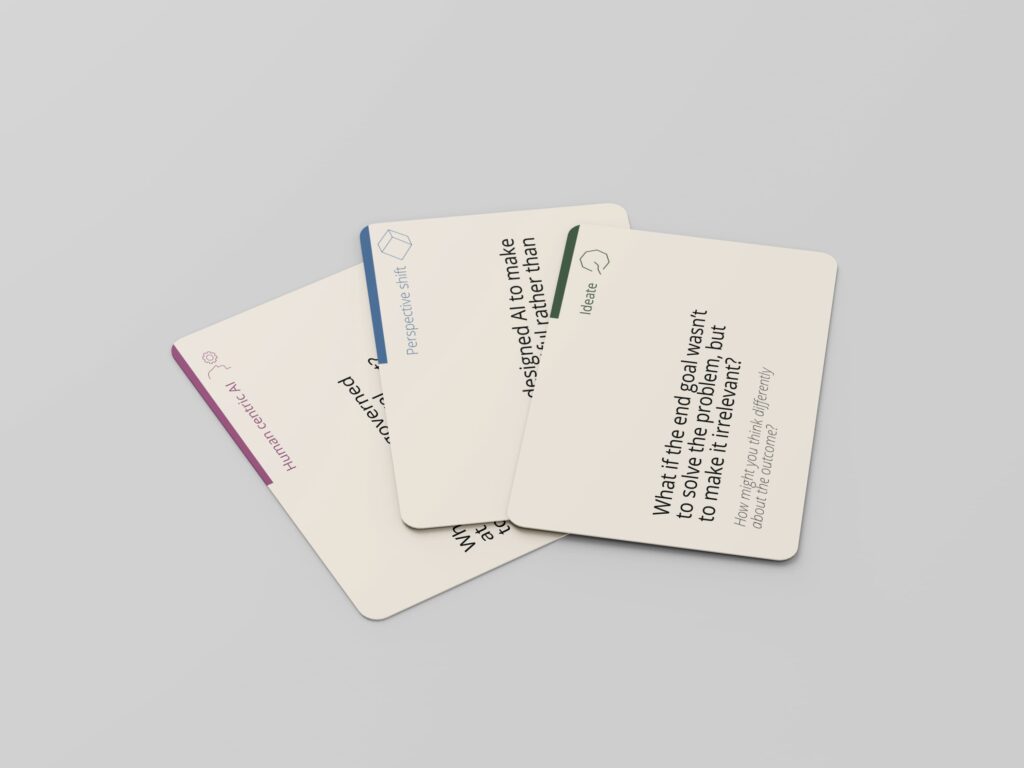Challenge assumptions.
Reframe problems.
Spark ethical imagination.
The What-If Liminality Toolkit is a curated set of 45 provocations designed to stretch your thinking and uncover new possibilities in the age of AI. Whether used individually or in teams, these cards invite you to:
- break conventional thinking patterns
- explore ethical and systemic dimensions
- imagine bold, human-centered futures
- prototype ideas from fresh perspectives
This AI-focused edition helps organisations and individuals ask better questions—especially where uncertainty, complexity, and impact intersect.
How it works
The toolkit is divided into six categories that serve different thinking goals:
- Ideate – ignite creative solutions
- Reframe your problem – look deeper at the real challenge
- Perspective shift – change the lens you’re looking through
- Ethics – evaluate unintended consequences
- Focus future – think beyond immediate goals
- Human-centric AI – consider technology that uplifts humanity
Each card starts with a provocative What if… question, followed by a second prompt to guide your reflection or discussion.

Ways to use the toolkit
For individuals
Use the cards to unblock your thinking, stress-test an idea, or explore a dilemma.
- Pick a card – either randomly or from a relevant category.
- Reflect – write your answers, sketch ideas, or voice-record your thoughts.
- Repeat – try three cards for depth or contrast.
- Capture insights – summarise new directions or questions that emerged.
Perfect for solo work, journaling, strategic reflection, or creative exploration.
For groups or teams
Use the toolkit in workshops, design sprints, ethics boards, or strategy meetings.
Setup:
- 2–8 participants
- Printed or digital cards
- 30–60 minutes recommended
Facilitation steps:
1. Set the context – define the problem, opportunity, or area you’re exploring.
2. Draw 1–3 cards – per person or for the group, from one or more categories.
3. Discuss – share initial reactions, then go deeper.
4. Capture insights – note surprising angles, tensions, or design implications.
5. Repeat or rotate – invite different people to draw cards for new input.
The most powerful insights often emerge from the questions that initially feel uncomfortable.
Ready to go deeper?
Use the toolkit to complement:
- strategic foresight exercises
- AI ethics frameworks
- system mapping and futures thinking
- innovation and product design sprints
- leadership and organisational learning
You can download the toolkit or reach out for facilitated sessions, tailored workshops, or integration into your current practice.
Human First AI Implementation
Discover how our approach helps organisations integrate AI in ways that are ethical, sustainable, and grounded in human potential.
